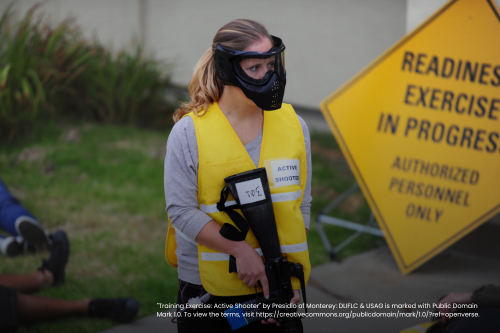Get Appointment
- contact@wellinor.com
- +(123)-456-7890
Active Shooter Insurance
Active shooter incidents have become an alarming and tragic reality in various public and private spaces, including workplaces, schools, and entertainment venues. As these events increase in frequency and severity, organizations are seeking ways to mitigate the financial and emotional impacts. Active shooter insurance has emerged as a specialized policy designed to provide comprehensive coverage for the myriad costs associated with such incidents.
Understanding Active Shooter Insurance
Active shooter insurance, also known as active assailant insurance, is a type of coverage that addresses the unique risks and expenses arising from active shooter events. These policies are tailored to cover a wide range of attack types, including those involving firearms, knives, explosive devices, and vehicles.

What Are the Key Components of Assailant Insurance?
- Primary Coverage: Unlike other insurance policies that may require the exhaustion of primary coverage, assailant insurance often provides immediate primary coverage. This ensures that organizations can respond swiftly to the crisis without waiting for other policies to be exhausted.
- Third-Party Liability: Active shooter incidents frequently involve third-party victims, such as visitors, customers, or bystanders. Standard liability policies may not cover these individuals, making it crucial for assailant insurance to include third-party liability coverage.
- Comprehensive Lawsuit Coverage: Beyond covering defense costs, active shooter insurance should extend to damages and judgments, which can be substantial in cases involving severe injuries or fatalities.
- Crisis Response and Management: Effective crisis response is critical in the aftermath of an active shooter event. Policies typically cover the costs of risk management, media relations, post-event hotlines, counseling, and funeral expenses.
- Property Damage: Active shooter events can cause significant property damage, including water damage from triggered fire suppression systems. Comprehensive coverage should address these potential losses.
- No Terrorism Exclusion: Many active shooter policies exclude terrorism, which can be problematic given the complexities of defining such events. Ensuring that the policy does not have a terrorism exclusion is vital for comprehensive coverage.
Why Is Active Shooter Insurance Important?
- Financial Protection: The immediate and long-term costs associated with active shooter incidents can be overwhelming. These include medical expenses, legal fees, crisis management, and property repairs. Assailant insurance provides a financial safety net to help organizations manage these expenses.
- Peace of Mind: For schools, businesses, and public venues, having active shooter insurance offers peace of mind. It reassures stakeholders that the organization is prepared to handle the aftermath of such a crisis, thereby enhancing overall safety and security.
- Enhanced Preparedness: Many active shooter insurance policies include provisions for training and preparedness programs. These initiatives help organizations develop effective response plans, conduct drills, and educate employees on how to react during an active shooter event.
Active shooter insurance is an essential component of a comprehensive risk management strategy in today’s unpredictable environment. By offering immediate financial protection, covering a wide range of liabilities, and supporting crisis response efforts, these policies help organizations navigate the complex aftermath of active shooter incidents. As the threat of such events continues to rise, investing in active shooter insurance is a prudent step towards safeguarding people and operations.
Click and learn about our approach to drafting commercial insurance coverage solutions.
